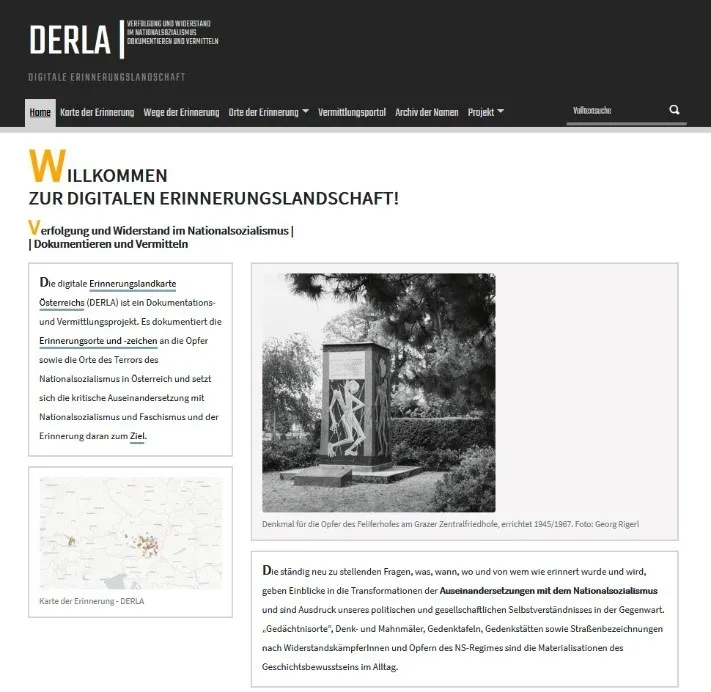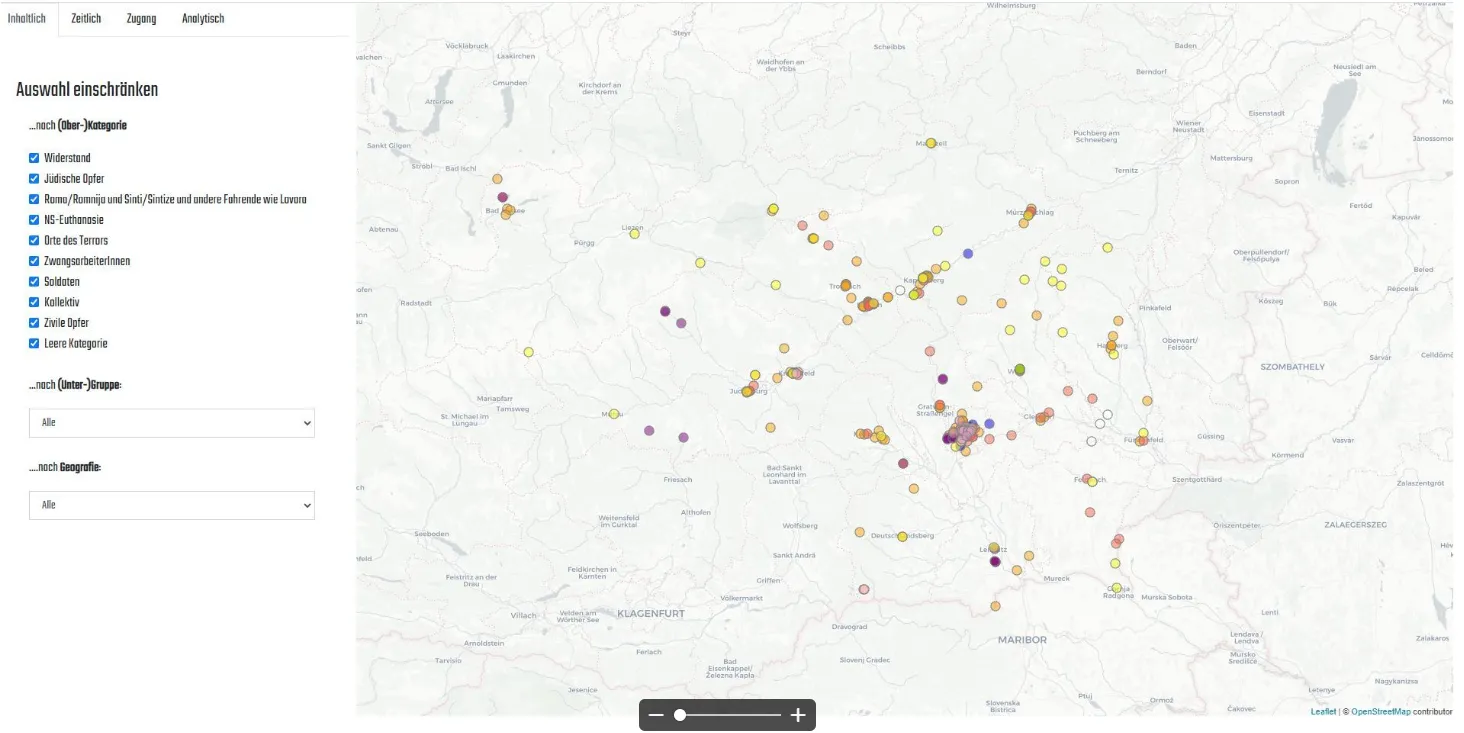
Digital Memoryscape Austria | erinnerungslandschaft.at Persecution and Resistance during NS | Documentation and Education
- Hosting organisations
- Centrum für Jüdische Studien, Zentrum für Informationsmodellierung - Austrian Centre for Digital Humanities (ZIM-ACDH), and erinnern.at Nationalsozialismus und Holocaust
- Responsible persons
- Gerald Lamprecht (Projektleitung), Sebastian Stoff, and Victoria Kumar
- Start
- End
“Digital Memoryscape Austria (DERLA) | erinnerungslandschaft.at Persecution and Resistance during National Socialism | Documentation and Education” understands itself as a documentation and education project. In addition to documenting and creating a digital memory map, it aims to develop new concepts of a digital memory pedagogy. Through the collaboration of historians, specialized didacticians, experts in digital humanities and young people, places of remembrance of the victims and terror of National Socialism in Austria are to be presented to a primarily young but also politically and historically interested public. The basic premise is that low-threshold access to the project is central to reaching the target groups. Low-threshold refers to the linguistic presentation of the contents as well as to the structure of the homepage itself and the graphic design.
Following Pierre Nora’s considerations, places of memory are places with meaning for the individual and collective memory. They have a meaning-making function and are part of the cultural memory. Places of memory are points of contact between past and future, interfaces between history and memory. If one relates the individual places of memory to each other, spaces of memory are created.
In DERLA, these different places of remembrance and spaces of remembrance are part of a map of remembrance that makes visible places of remembrance of the victims and terror of National Socialism and fascism at the time of the year 2020. The documentation of the signs has been completed in the provinces of Styria and Vorarlberg, is underway in Tyrol and Carinthia, and other provinces are to be added. The central point here is that the different time layers of memory and thus also the transformations of memory culture are made visible in the memory map.
However, while Pierre Nora understands by places of memory not only physical places, but also immaterial places, such as music, concepts, texts, narratives and ideas, DERLA works with purely topographical places that are provided with GPS coordinates and can be located within the memory landscape.
DERLA further distinguishes between manifest and non-manifest memory places. Manifest places of remembrance are those that are made visible to the public as places of remembrance through commemorative signs (monuments, memorial plaques, etc.). Non-manifest places of remembrance are places of remembrance that do not yet have a publicly visible sign of remembrance, but have a historical connection to victims and/or the terror of National Socialism and fascism. With DERLA a virtual sign is set for them.
On the one hand, memorial signs mark places of remembrance and make them visible to the public. But they can also become places of remembrance themselves and are a reference to events, experiences and crimes for which National Socialism and Fascism are responsible, as well as an intentional expression of the culture of remembrance of certain groups.
Each memorial sign/site is documented in DERLA with at least two contemporary photographs. One shows the memorial sign itself and a second image captures the local setting of the sign in order to investigate questions of public visibility or invisibility. In addition, inscriptions are transcribed if they are not readable in the photographs.
All manifest and non-manifest sites of remembrance recorded in DERLA are included in the digital map of remembrance and together form the landscape of remembrance formed since 1945. Each commemorative site is annotated with information about the historical event or persons commemorated as well as the history of the commemorative sign and site itself. Furthermore, the commemorative signs and places are assigned to different categories for better orientation of the users as well as in relation to the mediation offers. These categories are based on the intentions of the founders and installers of the commemorative signs and, in the case of the non-manifest commemorative sites, on the historical events/experiences associated with the respective site.
Finally, the documentation is completed by an “Archive of Names”. In this, all persons named on the commemorative signs are recorded and presented with a short biography, as far as it can be researched. In this way, DERLA not only provides an insight into Austria’s commemorative landscape, but also sets up a virtual monument.
